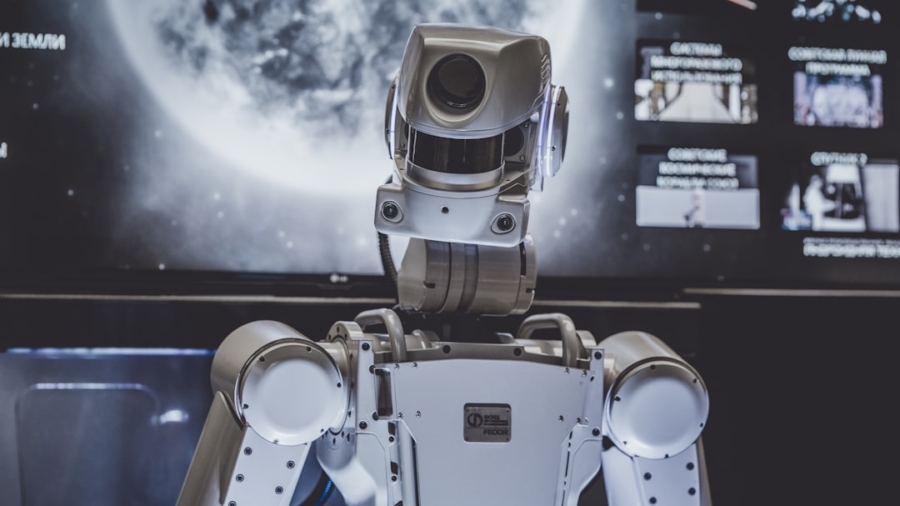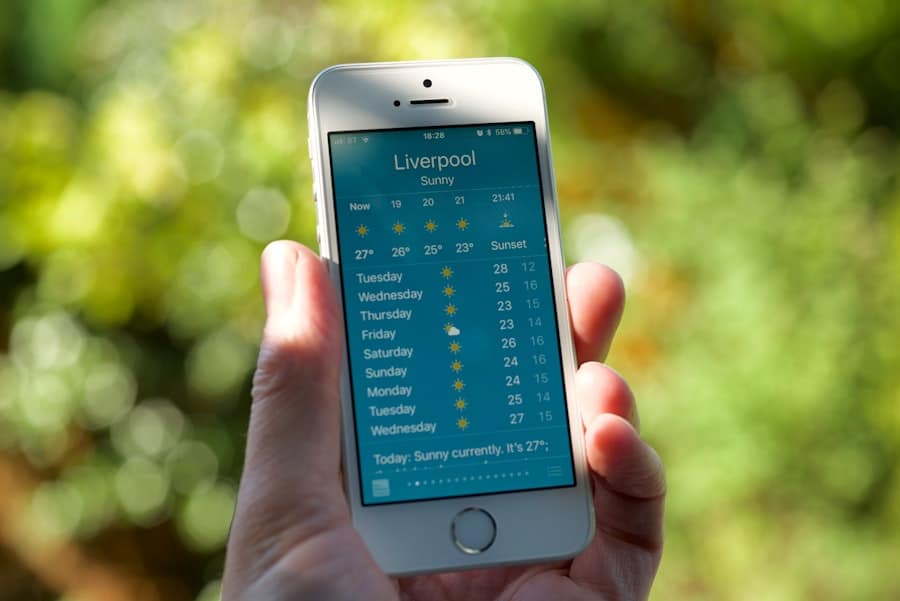The advent of 5G technology marks a significant leap in mobile telecommunications, promising unprecedented speed, lower latency, and enhanced connectivity. This next-generation network is not merely an incremental upgrade from its predecessor, 4G; it represents a paradigm shift that enables a multitude of applications across various sectors. One of the most exciting areas poised to benefit from 5G is the realm of artificial intelligence (AI), particularly in the development and functionality of personal assistants.
These AI-powered tools, which include popular applications like Siri, Google Assistant, and Alexa, are becoming increasingly integral to our daily lives, assisting with tasks ranging from scheduling appointments to controlling smart home devices. As 5G networks roll out globally, the synergy between this advanced connectivity and AI-powered personal assistants is expected to redefine user experiences. The combination of high-speed data transfer and sophisticated AI algorithms will allow these assistants to operate more efficiently and effectively.
With the ability to process vast amounts of data in real-time, personal assistants can provide more accurate responses, anticipate user needs, and seamlessly integrate with a growing ecosystem of smart devices. This article delves into the multifaceted impact of 5G on personal assistants, exploring how enhanced connectivity and speed can revolutionize their performance and user experience.
Key Takeaways
- 5G and AI-powered personal assistants are revolutionizing the way we interact with technology.
- 5G significantly improves personal assistant performance by enhancing connectivity and speed.
- Real-time data processing is made possible with 5G, allowing for quicker and more efficient responses from personal assistants.
- Natural language processing is advancing with 5G, enabling more accurate and context-aware interactions.
- 5G is improving the overall user experience of personal assistants through enhanced connectivity and real-time data processing.
The Impact of 5G on Personal Assistant Performance
Enhanced Capabilities with Increased Bandwidth and Reduced Latency
The performance of AI-powered personal assistants is heavily reliant on the underlying network infrastructure. With the introduction of 5G, these assistants can leverage the increased bandwidth and reduced latency to enhance their capabilities significantly. For instance, tasks that previously required substantial processing time can now be executed almost instantaneously.
Improved Voice Recognition and Natural Language Processing
This improvement is particularly evident in voice recognition and natural language processing (NLP), where the ability to quickly analyze and respond to user queries is paramount. As a result, users can expect a more fluid interaction with their personal assistants, reducing frustration associated with lag or delays.
Seamless Integration with Smart Devices
Moreover, 5G’s ability to support a higher density of connected devices means that personal assistants can interact with a broader array of smart devices simultaneously. This capability is crucial in environments such as smart homes, where multiple devices may need to communicate at once. For example, a user could ask their personal assistant to adjust the thermostat while simultaneously turning on the lights and playing music—all without experiencing any degradation in performance. The seamless integration of these tasks not only enhances user satisfaction but also encourages greater adoption of smart technologies.
Enhanced Connectivity and Speed with 5G
One of the hallmark features of 5G technology is its remarkable speed, which can reach up to 10 gigabits per second under optimal conditions. This speed is a game-changer for AI-powered personal assistants, as it allows for rapid data transmission between devices and cloud servers. In practical terms, this means that when a user issues a command—such as asking for the weather forecast or requesting a recipe—the assistant can retrieve information from the internet almost instantaneously.
The reduction in wait times enhances the overall user experience, making interactions feel more natural and less cumbersome. Additionally, 5G’s enhanced connectivity capabilities enable personal assistants to maintain stable connections even in densely populated areas or during peak usage times. This reliability is crucial for users who depend on their assistants for timely information or control over their smart devices.
For instance, imagine a scenario where a user is navigating through a crowded city while relying on their personal assistant for real-time traffic updates. With 5G’s robust connectivity, the assistant can provide accurate information without interruption, allowing the user to make informed decisions on the go.
Leveraging 5G for Real-Time Data Processing
The ability to process data in real-time is one of the most significant advantages offered by 5G technology. For AI-powered personal assistants, this capability translates into more responsive and intelligent interactions. With traditional networks, data processing often involves delays due to bandwidth limitations or latency issues.
However, 5G’s architecture allows for edge computing, where data processing occurs closer to the source rather than relying solely on distant cloud servers. This shift not only speeds up response times but also reduces the amount of data that needs to be transmitted over the network. Real-time data processing enables personal assistants to learn from user interactions more effectively.
For example, if a user frequently asks about local restaurants or events, the assistant can quickly analyze this behavior and tailor its responses accordingly. It might suggest new dining options based on previous preferences or alert the user about upcoming events in their area. This level of personalization enhances user engagement and satisfaction, as the assistant becomes more attuned to individual needs and preferences.
Advancements in Natural Language Processing with 5G
Natural language processing (NLP) is at the core of AI-powered personal assistants, enabling them to understand and respond to human language in a meaningful way. The advancements brought about by 5G technology are set to elevate NLP capabilities significantly. With faster data transmission speeds and improved processing power, personal assistants can analyze complex language patterns and nuances more effectively.
This enhancement allows for better comprehension of context, tone, and intent behind user queries. For instance, consider a scenario where a user asks their assistant about “the best Italian restaurant nearby.” With traditional networks, the assistant might struggle to interpret the request accurately due to limitations in processing speed or contextual understanding. However, with 5G’s capabilities, the assistant can quickly access vast databases of information and analyze user reviews in real-time, providing a more informed recommendation that considers factors such as distance, cuisine type, and even current traffic conditions.
5G’s Role in Improving Personal Assistant User Experience
The overall user experience with AI-powered personal assistants is poised for transformation with the implementation of 5G technology. The combination of enhanced speed, connectivity, and real-time processing creates an environment where users can interact with their assistants more fluidly and intuitively. This improvement is particularly important as users increasingly rely on these tools for everyday tasks—ranging from managing schedules to controlling smart home devices.
Personal assistants can now incorporate video calls or augmented reality features into their functionalities. For example, a user could ask their assistant for cooking instructions while simultaneously viewing a video demonstration on their smart display.
This integration not only enriches the interaction but also provides users with a more comprehensive understanding of how to execute tasks effectively.
The Potential for Personal Assistant Integration in Smart Homes and IoT Devices
As smart home technology continues to proliferate, the integration of AI-powered personal assistants with Internet of Things (IoT) devices becomes increasingly vital. 5G’s ability to support numerous connected devices simultaneously allows personal assistants to serve as central hubs for managing various smart home functionalities. Users can control lighting, heating, security systems, and entertainment devices through simple voice commands or app interfaces.
For instance, imagine a scenario where a user arrives home after a long day at work. They could simply say, “Hey Assistant, I’m home,” prompting the system to automatically adjust the thermostat to a comfortable temperature, turn on the lights in key areas, and play their favorite music playlist—all executed seamlessly through 5G connectivity. This level of integration not only enhances convenience but also promotes energy efficiency by allowing users to monitor and control their energy consumption more effectively.
Overcoming Challenges and Considerations for 5G-Powered AI Personal Assistants
Despite the numerous advantages that 5G technology brings to AI-powered personal assistants, several challenges must be addressed to fully realize its potential. One significant concern is security; as more devices become interconnected through 5G networks, the risk of cyberattacks increases. Personal data transmitted over these networks must be adequately protected to prevent unauthorized access or breaches.
Additionally, there are considerations regarding infrastructure development and accessibility. While urban areas may quickly adopt 5G technology due to existing telecommunications frameworks, rural regions may lag behind due to economic constraints or logistical challenges in deploying new infrastructure. Ensuring equitable access to 5G networks will be crucial for maximizing the benefits of AI-powered personal assistants across diverse demographics.
Furthermore, as personal assistants become more integrated into daily life through 5G technology, ethical considerations surrounding data privacy and user consent will come to the forefront.
In conclusion, while the integration of 5G technology with AI-powered personal assistants presents exciting opportunities for enhanced performance and user experience, it also necessitates careful consideration of security measures and equitable access across different regions.
As we move forward into this new era of connectivity, addressing these challenges will be essential for harnessing the full potential of these transformative technologies.
If you’re interested in exploring the intersection of technology and language, you may want to check out this article on the best free software for translation. Just as 5G is revolutionizing the capabilities of AI-powered personal assistants, advancements in translation software are also pushing the boundaries of what is possible in the realm of language processing. By leveraging tools like NeuronWriter for SEO and NLP optimization, as discussed in this article, businesses can enhance their content and reach a wider audience. For those interested in the technical aspects of software development, this list of the best software testing books may provide valuable insights into ensuring the quality and reliability of AI-powered technologies.
FAQs
What is 5G technology?
5G technology is the fifth generation of mobile network technology, offering faster speeds, lower latency, and the ability to connect a massive number of devices simultaneously.
What are AI-powered personal assistants?
AI-powered personal assistants are virtual assistants that use artificial intelligence to understand and respond to natural language commands. They can perform tasks such as setting reminders, providing weather updates, and answering questions.
How does 5G empower AI-powered personal assistants?
5G empowers AI-powered personal assistants by providing faster and more reliable connectivity, enabling them to process and respond to requests more quickly. This allows for real-time interactions and more seamless user experiences.
What are the benefits of 5G for AI-powered personal assistants?
The benefits of 5G for AI-powered personal assistants include improved response times, enhanced reliability, and the ability to handle more complex tasks and data-intensive processes. This can lead to more efficient and effective personal assistant experiences for users.
How does 5G impact the capabilities of AI-powered personal assistants?
5G impacts the capabilities of AI-powered personal assistants by enabling them to access and process larger amounts of data more quickly, as well as facilitating more advanced features such as real-time language translation and augmented reality experiences.



